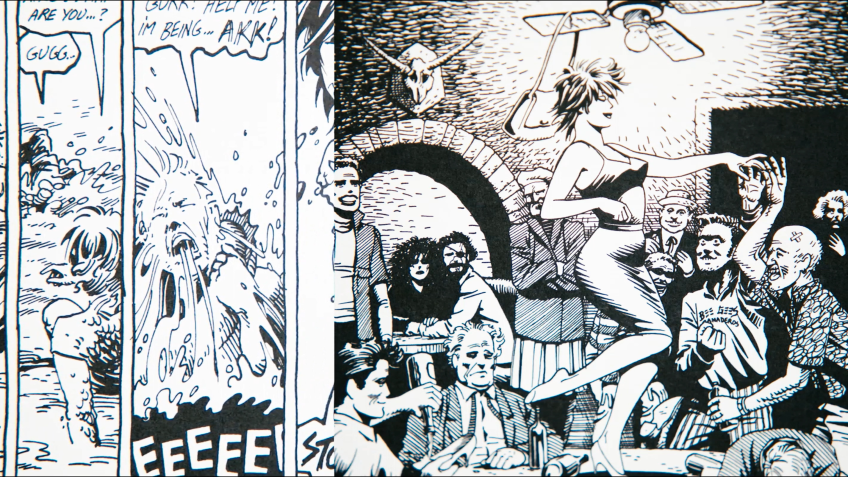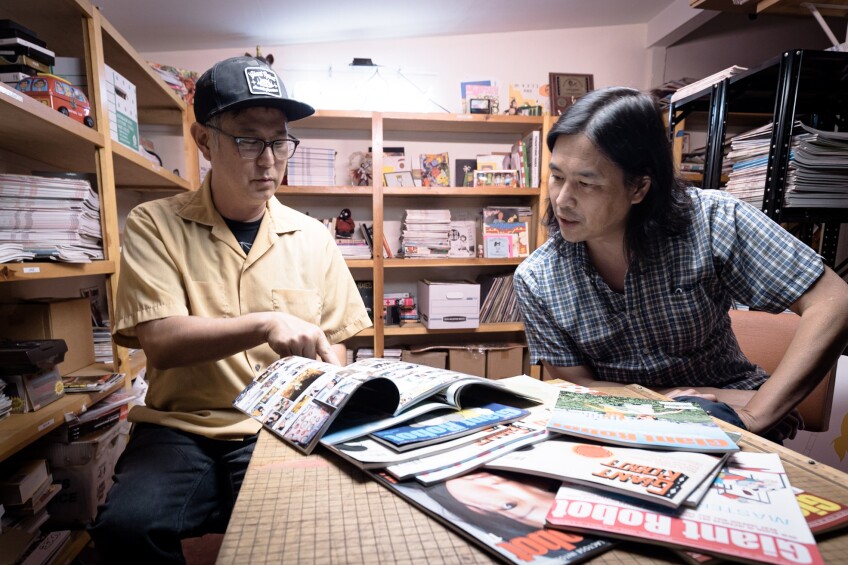From Duchamp's Influence on L.A. Art to Asian American Pop Culture: A Guide to 'Artbound' Season 13

"Artbound" season 13 centers a variety of artistic movements, art forms and innovators that have shaped Southern California's artistic landscape — from a decades-long comic series inspired by the California punk scene to an independent Asian pop culture magazine born out of Sawtelle. View this season's full lineup and learn more about each episode below.
Love & Rockets: The Great American Comic Book
Wednesday, Oct. 5 at 9 p.m. on KCET

Love and Rockets astounded the alternative comic book scene and garnered a world-wide fanbase by pushing the edge of storytelling through graphic art. Originally published by the Hernandez Brothers, Love and Rockets has been praised for its diversity and nuance. Its storylines have continued for the past 40 years with its characters aging and situations developing in real-time. Directed and produced by Dignicraft.
Duchamp Comes to Pasadena
Wednesday, Oct. 5 at 10:01 p.m. on KCET

In 1963, Marcel Duchamp, considered by many to be the father of conceptual art, was photographed in a museum playing chess against a nude model. This documentary tells the story behind this iconic image and reveals how Duchamp agreed to hold his first-ever career retrospective in L.A. at a time when the city was considered an artistic wasteland. The opening night party would become a defining moment for generations of artists who would go on to revolutionize the contemporary art world. Directed by David Grabias. Produced by Artifact Studios, Inc.
Arte Cósmico
Wednesday, Oct. 12 at 9 p.m. on KCET

This documentary follows noted artists rafa esparza, Beatriz Cortez, Patrick Martinez, Guadalupe Rosales, Gabriella Sanchez and Gabriela Ruiz working in Los Angeles exhibiting both locally and worldwide. These artists have been taking center stage at international art fairs and museums, catalyzing conversations about their place in the history of American art. Directed by Antonio Diaz. Produced with Hector Pacheco at Life & Thyme.
A New Deal for Los Angeles
Wednesday, Oct. 19 at 9 p.m. on KCET

When Franklin D. Roosevelt created the Works Progress Administration (WPA) as a way to provide opportunities to millions of unemployed Americans recovering from The Great Depression, no one imagined how far-reaching its impact would be. From critical infrastructure to visual art pieces, over 140 projects were completed by the WPA in Los Angeles. However, the WPA also gifted Americans with a lesser known legacy of music, theater and literary works. This film explores the importance of art in infrastructure in the WPA era and takes a look at publicly funded arts programs across the city to ask the question: what would a new WPA look like today? Directed by Anna Rau and Corbett Jones. Produced by The Range.
Giant Robot: Asian Pop Culture and Beyond
Wednesday, Oct. 26 at 9 p.m. on KCET

Founded in 1994, Giant Robot was a bimonthly magazine covering Asian popular culture and soon featured Asian American artists such as David Choe and James Jean. This episode shows how Giant Robot created an appetite for Asian and Asian American pop culture, exploring Sawtelle Avenue as a Japanese American enclave, and ultimately creating a lasting legacy of Asian American artists that achieved worldwide recognition. Featuring interviews with Margaret Cho, Takashi Murakami and Daniel Wu among others. Directed by Dylan Robertson and Dennis Nishi. Produced by Radiant Features.
A Rubén Ortiz Torres Story
Wednesday, Nov. 2 at 9 p.m. on KCET

Since the early '80s, artist Rubén Ortiz Torres has been working as a photographer, painter, sculptor, writer, filmmaker and video producer. Often associated with the development of a specifically Mexican form of postmodernism, Ortiz Torres's life is a collage that explores the social and aesthetic transformations related to cross-cultural exchange and globalization. This episode examines how his past and present informs an uncertain socio-economic future. Directed by Michael Vargas and Moni Vargas. Produced by Friends We Love, Inc.





